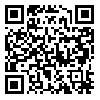جمعه 28 شهریور 1404
دوره 4، شماره 4 - ( Winter 2015-- 1393 )
جلد 4 شماره 4 صفحات 212-205 |
برگشت به فهرست نسخه ها
Download citation:
BibTeX | RIS | EndNote | Medlars | ProCite | Reference Manager | RefWorks
Send citation to:



BibTeX | RIS | EndNote | Medlars | ProCite | Reference Manager | RefWorks
Send citation to:
Sadeghi H, Banitalebi E, Raeisi Dehkordi M. The Effect of Body-Weight-Supported Training Exercises on Functional Ambulation Profile in Patients with Paraplegic Spinal Cord Injury. PTJ 2015; 4 (4) :205-212
URL: http://ptj.uswr.ac.ir/article-1-156-fa.html
URL: http://ptj.uswr.ac.ir/article-1-156-fa.html
The Effect of Body-Weight-Supported Training Exercises on Functional Ambulation Profile in Patients with Paraplegic Spinal Cord Injury. فصلنامه فیزیک درمانی. 1393; 4 (4) :205-212
چکیده: (8740 مشاهده)
Purpose: This study aimed to examine the effect of Body-Weight-Supported Treadmill Training (BWSTT) exercises on functional ambulation profile in patients with paraplegic spinal cord injury.
Methods: This was a quasi experimental study with pre test and post test. The statistical population consisted of paraplegia spinal cord injured persons in Shahrekord City. Seventeen voluntary patients with paraplegic spinal cord injury (American Spinal Injury Association [ASIA] B, C classification, with the demographic data [mean±SD] of age 32.53±1.793 y, height 175.71±1.658 cm, weight 71.59±2.442 kg, and Body Mass Index [BMI] 23.18±0.828 kg/m2) selected with convenience sampling. The subjects were randomly assigned to BWSTT group (n=10) and traditional exercise group (n=7). Both groups were trained 60 min per session, 4 sessions per week for 12 weeks. BWSTT included 15 min warm up on fixed gear bike, 45 min BWSTT with 50% body weight and finally 10 min cold down. About 10% load was added each week. Traditional exercises included 15 min warm up plus 45 min stretch exercise and resistance training. SPSS 19.0 software was used to examine between groups. An independent t test was used to compare the changes between pretest and post test between BWSTT and traditional training groups.
Results: The data showed that there were significant differences between BWSTT and traditional groups with regard to changes in lower extremity motor score (P<0.001), walking index spinal cord injury (P=0.002), 6 min walking test (P=0.001), and 10 meter walking test (P=0.001).
Conclusion: BWSTT in comparison with traditional exercise can improve more motor function and quality and quantity of walking in people with paraplegic spinal cord injury (ASIA B, C classification).
نوع مطالعه: پژوهشي |
موضوع مقاله:
آسیب شناسی ورزشی و حرکات اصلاحی
دریافت: 1393/7/14 | پذیرش: 1393/10/6 | انتشار: 1393/10/11
دریافت: 1393/7/14 | پذیرش: 1393/10/6 | انتشار: 1393/10/11
| بازنشر اطلاعات | |
 |
این مقاله تحت شرایط Creative Commons Attribution-NonCommercial 4.0 International License قابل بازنشر است. |

